The 1950s and 1960s marked the rise of computer science. It was during these decades that computer science and its associated fields started to progress at a rapid pace. This progress necessitated the use of a structured approach to software development, thus giving rise to software development life cycle (SDLC) methodologies. Over the past three-quarters of a century, software development has evolved as new approaches and methods replaced old ones.
In this article, we will discuss the top 10 SDLC methodologies in 2024. However, before we discuss these approaches, it is good to shed light on the basics and the historical evolution of software development.
Let’s start with a definition of software development life cycle methodologies in software development services.
What are Software Development Life Cycle Methodologies?
Software Development Life Cycle (SDLC) methodologies are structured approaches or frameworks used to guide the process of developing software from conception to deployment and maintenance. These methodologies provide a systematic way to plan, design, build, test, and deploy software systems.
There are several SDLC methodologies, each with its own set of principles, practices, and processes. We will discuss the 10 best SDLC methodologies below. However, we will first give a historical overview of how software development methodologies evolved.
Historical Evolution of SDLC Methodologies
We must highlight how traditional software development approaches like Waterfall transformed into Agile SDLC. Let’s talk about the Waterfall approach.
Waterfall – The Traditional Software Development Model
The Waterfall model, although obsolete now, stands as a critical milestone in the history of software methodologies. It laid the groundwork for all future approaches to software development, like Agile. The concept of a linear, sequential process for software development gained traction in the burgeoning field of computing during the 1970s.
In 1970, an American computer scientist named Winston W. Royce penned a seminal paper, “Managing the Development of Large Software Systems.” This paper outlined a structured approach to software development. It proposed a series of sequential phases, including requirements analysis, system design, implementation, testing, deployment, and maintenance, where each phase flowed downstream into the next, just like a waterfall – and hence, its name.
Despite its conceptual simplicity and initial popularity, the Waterfall model soon encountered practical challenges in real-world software projects. Its inherent rigidity and assumption of predictability in the development process often led to difficulties in accommodating changes, evolving requirements, and adapting to shifting priorities.
Moreover, the model’s linear nature meant that feedback loops between stakeholders and developers were limited. This caused mismatches between the final product and user expectations.
Despite its shortcomings, Royce’s Waterfall model remained a popular approach to software development in the 1980s and ‘90s, especially in domains such as aerospace, defense, and large-scale government projects, where companies had to ensure strict adherence to predefined specifications and regulations.
But very soon, in the late 1990s, the software development industry began to move beyond this model as their practices matured and projects became increasingly complex. Developers and organizations began to recognize the need for more flexible, adaptive methodologies that could better accommodate changing requirements, mitigate risks, and deliver value incrementally. This eventually gave rise to a set of practices and approaches collectively called the Agile software development approaches.
Let’s discuss these now.
Top 10 SDLC Methodologies
The limitations of the Waterfall model ultimately spurred the evolution toward more agile and adaptable approaches. This resulted in a significant shift in how software is conceptualized, developed, and delivered. However, some of these approaches are no longer actively used by developers but still merit mention.
Let’s discuss some of these top SDLC methodologies now.
-
The Prototyping Model
One of the earliest substitutes for the Waterfall model was the Prototyping approach. It emphasized the development of low-fidelity prototypes to gather user feedback, which, in turn, was used to develop the prototypes further towards the final software product. Developers no longer use this approach, which was developed somewhere in the 1970s.
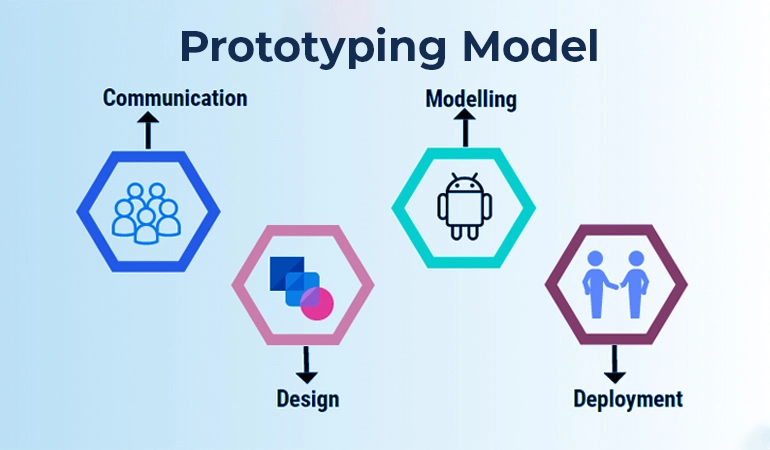
However, the benefit of this model was that it helped in situations where the project requirements were not articulated, as it allowed prospective users to interact with a tangible prototype early in the development process.
-
The Iterative Model
The Iterative model is an early forerunner of the Agile approach. It involves repeating the development process in a series of iterations or increments. Each iteration encompasses all the SDLC stages, including requirements gathering, design, implementation, testing, and deployment.
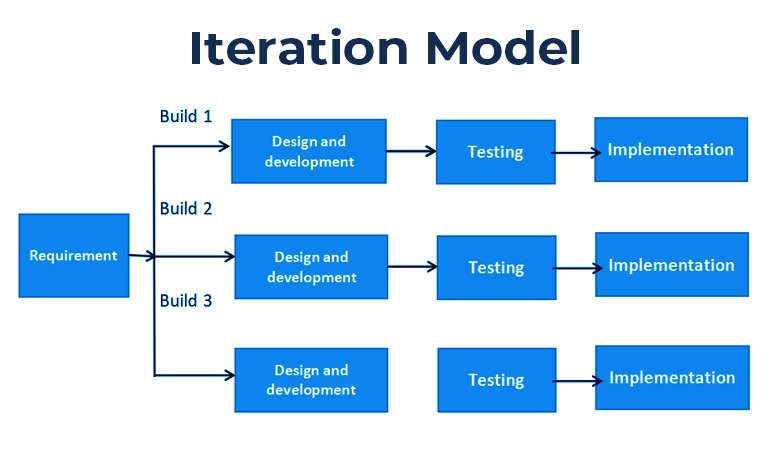
Unlike the linear progression of the Waterfall model, the Iterative model allows for flexibility and adaptation throughout the development cycle. In each iteration, the software developer selects a subset of features for implementation based on priority and stakeholder feedback. The software is then developed, tested, and delivered in a short timeframe, typically ranging from a few weeks to a couple of months.
At the end of each iteration, the developers evaluate the software and incorporate the feedback in subsequent iterations. This iterative process continues until the software meets the desired level of quality and functionality.
-
The Spiral Model
The Spiral model is the brainchild of Barry Boehm. He wrote a paper in 1986 titled “A Spiral Model of Custom Software Development and Enhancement,” which explained this approach. The Spiral model integrates elements of iterative development with risk management principles and, like the Iterative approach, it sought to overcome Waterfall’s limitations.
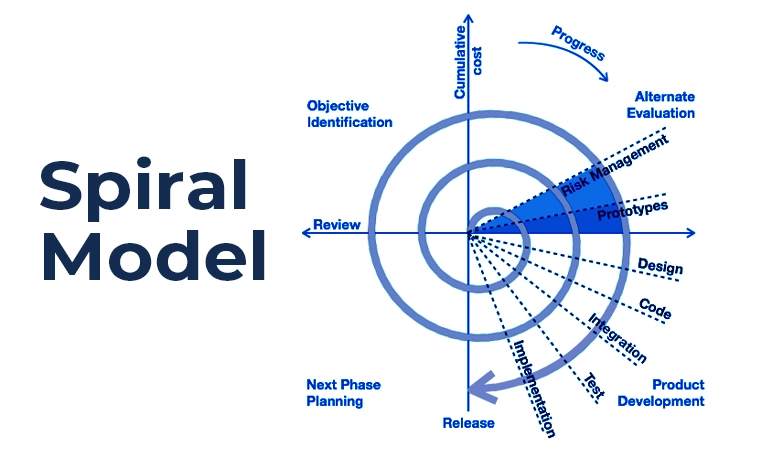
The Spiral model emphasizes risk management throughout the development process, with each iteration allowing for the identification and mitigation of risks early on. It is particularly well-suited for large, complex projects where requirements are unclear or subject to change. However, its iterative nature can also increase its development time and cost.
-
V-Model
The V-shaped model is also called the Verification and Validation Model – it is a variant of the traditional Waterfall model and emphasizes the relationship between each phase of development and its corresponding testing phase.
It is also named as such for its V-shaped representation of the development and testing phases. The left side of the V represents the development phases, while the right side represents the corresponding testing phases.
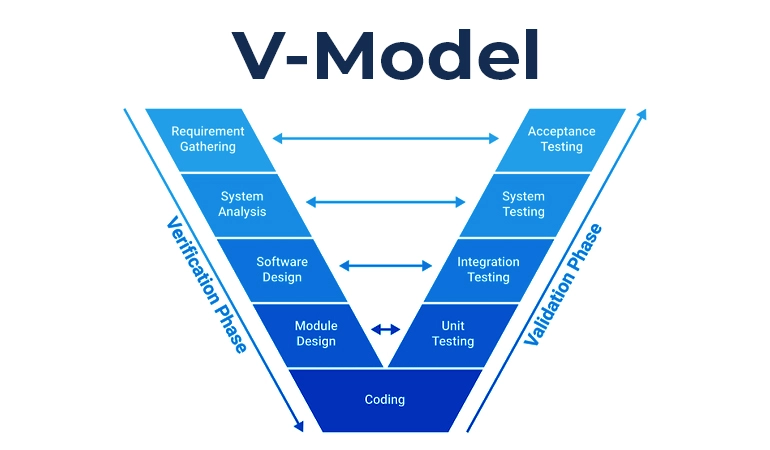
This approach helps developers ensure that defects are identified and addressed early in the development process, thus minimizing the risk of costly rework later on. However, like the traditional Waterfall Model, the V-shaped model is considered rigid and less adaptable to changes in requirements or stakeholder feedback.
-
Agile
The world of software development underwent a revolution when 17 top software experts decided to draft the Agile Manifesto in 2001. The Agile Software Development Lifecycle emphasizes iterative development, collaboration, adaptability, and customer satisfaction. It is considered the foremost SDLC approach in use today. Many Agile frameworks took root because of this approach, including Kanban and Scrum, which we will discuss shortly.

Four Core Agile Values
- Individuals and Interactions over Processes and Tools: Agile prioritizes the importance of people and their interactions in software development over relying solely on processes and tools. It emphasizes open communication, collaboration, and teamwork among team members.
- Working Software over Comprehensive Documentation: Agile values the delivery of working software as the primary measure of progress. While documentation is important, Agile encourages teams to focus on delivering tangible value to customers through functional software.
- Customer Collaboration over Contract Negotiation: Agile promotes close collaboration between development teams and customers throughout the project. By involving customers in the development process, Agile ensures that the delivered software meets their needs and expectations.
- Responding to Change over Following a Plan: Agile embraces change as a natural and inevitable part of the software development process. Agile teams are encouraged to adapt and respond to changing requirements, priorities, and feedback, instead of rigidly following a predefined plan.
Principles of Agile
- Satisfy the Customer through Early and Continuous Delivery of Valuable Software: Agile prioritizes delivering working software to customers frequently, enabling early feedback and ensuring that the delivered software provides value to the customer.
- Welcome Changing Requirements, Even Late in Development: The Agile approach recognizes that requirements are likely to change over time and encourages teams to embrace change rather than resist it. Therefore, Agile principles processes are designed to accommodate changing requirements and priorities throughout the project.
- Deliver Working Software Frequently, with a Preference to Shorter Timescales: It promotes iterative development and incremental delivery, with a focus on delivering small, usable increments of software frequently. Shorter development cycles allow for faster feedback and adaptation.
- Business People and Developers Must Work Together Daily Throughout the Project: Close collaboration between business stakeholders and development teams is the cornerstone of the Agile SDLC. By working together daily, stakeholders can provide timely feedback, clarify requirements, and ensure alignment between business goals and technical implementation.
- Build Projects around Motivated Individuals, Give Them the Environment and Support They Need, and Trust Them to Get the Job Done: The Agile methodology recognizes the importance of motivated and empowered team members. Teams are given the autonomy, resources, and support they need to succeed, with trust placed in their ability to deliver results.
- The Most Efficient and Effective Method of Conveying Information to and Within a Development Team is Face-to-Face Conversation: Agile values face-to-face communication as the most effective way to convey information and ensure shared understanding among team members. While remote communication tools can be useful, Agile encourages direct interaction whenever possible.
- Working Software is the Primary Measure of Progress: As a software methodology, Agile emphasizes the importance of delivering working software as the primary measure of progress. It assesses progress based on the functionality and value it delivers to customers rather than adherence to timelines or milestones.
- Agile Processes Promote Sustainable Development. The Sponsors, Developers, and Users Should Be Able to Maintain a Constant Pace Indefinitely: Agile seeks to maintain a sustainable pace of development over the long term. By avoiding overwork and burnout, teams can sustain their productivity and deliver high-quality software consistently.
- Continuous Attention to Technical Excellence and Good Design Enhances Agility: Agile emphasizes the importance of technical excellence and good design practices in software development. By prioritizing quality and craftsmanship, teams can maintain agility and respond effectively to changing requirements.
- Simplicity—the Art of Maximizing the Amount of Work Not Done—is Essential: Agile encourages simplicity in both the software being developed and the development process itself. By focusing on the essentials and minimizing unnecessary complexity, teams can maximize productivity and deliver value more efficiently.
- The Best Architectures, Requirements, and Designs Emerge from Self-Organizing Teams: The Agile approach promotes self-organizing teams that are empowered to make decisions and solve problems autonomously. By leveraging the collective expertise and creativity of team members, Agile teams can produce innovative solutions that meet the needs of stakeholders.
- At Regular Intervals, the Team Reflects on How to Become More Effective, Then Tunes and Adjusts Its Behavior Accordingly: Teams that follow the Agile approach engage in regular reflection and adaptation to improve their effectiveness. Through retrospectives and continuous improvement practices, teams identify areas for enhancement and adjust their processes accordingly to optimize their performance.
-
Scrum
Scrum is one of the most popular Agile frameworks. It is characterized by its iterative approach, self-organizing teams, and emphasis on delivering value to customers in short cycles called sprints. Scrum was formalized in the early 1990s by Jeff Sutherland and Ken Schwaber. Since then, it has become one of the most widely used Agile methodologies.
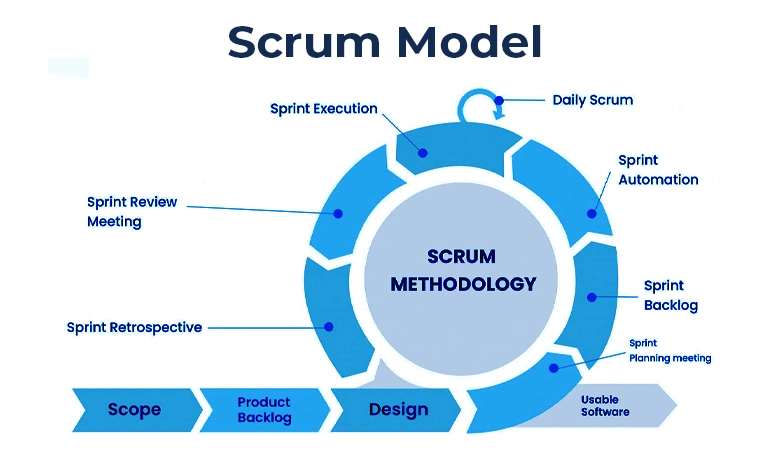
Core Components of Scrum
Roles
- Product Owner: Represents the stakeholders and is responsible for defining and prioritizing the product backlog, ensuring that the team delivers value to the customer.
- Scrum Master: Facilitates the Scrum process, removes impediments, and helps the team adhere to Scrum principles and practices.
- Development Team: A cross-functional team responsible for delivering increments of working software during each sprint.
Artifacts
- Product Backlog: A prioritized list of all desired features, enhancements, and fixes for the product. Managed and prioritized by the Product Owner.
- Sprint Backlog: A subset of items from the Product Backlog selected for implementation during the sprint. It is owned by the Development Team.
- Increment: A potentially shippable product increment produced by the development team during the sprint.
Events
- Sprint Planning: This is a meeting where the Product Owner and Development Team collaborate to select and plan the work for the upcoming sprint.
- Daily Standup (Daily Scrum): A short, daily meeting where team members synchronize their work, discuss progress, and identify any obstacles.
- Sprint Review: A meeting at the end of the sprint where the team demonstrates the completed work to stakeholders and collects feedback.
- Sprint Retrospective: A meeting held after the Sprint Review allows the team to reflect on their process. They identify what goes well and what could be improved and create a plan for implementing changes in the next sprint.
-
Kanban
Kanban has its roots in a Japanese manufacturing approach employed by the leading automobile manufacturer, Toyota. It is a visual management method that translates to “visual card” or “signboard” in Japanese.
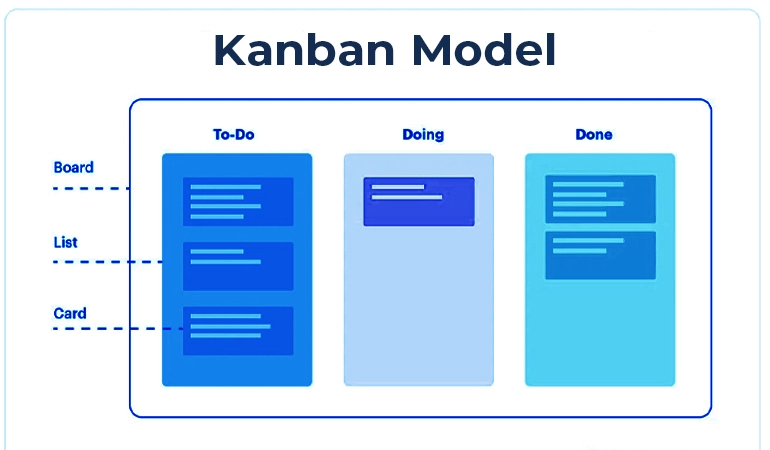
Unlike some other SDLC methodologies, Kanban does not prescribe specific phases or iterations. Instead, it focuses on continuous delivery, efficiency, and minimizing waste by visualizing and optimizing the flow of work.
-
Lean
Lean Software Development is inspired by Lean manufacturing principles and aims to maximize value while minimizing waste. It emphasizes delivering value to customers quickly, optimizing the whole process, and empowering teams to continuously improve.
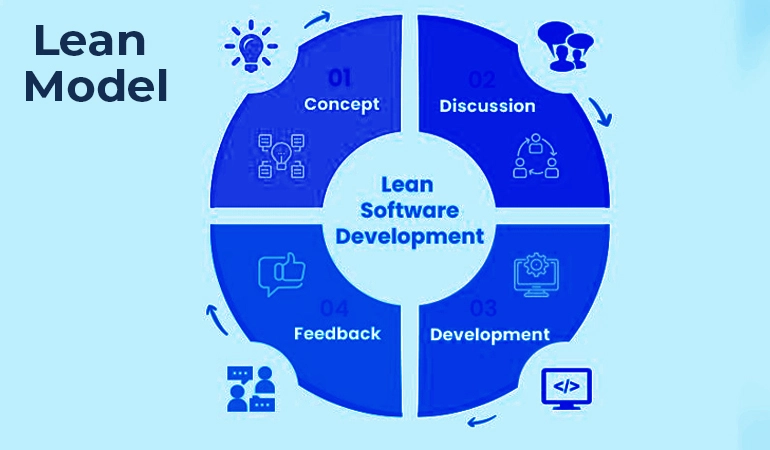
Its key principles include:
- Eliminate waste in the development process, such as unnecessary features, rework, and delays.
- Amplify learning by continuously seeking feedback from customers and stakeholders and using it to improve processes and products.
- Lean emphasizes delivering value to customers quickly through small, incremental releases.
- Team empowerment is another key principle of the Lean approach. It encourages cross-functional, self-organizing, and empowered teams to take ownership of their work.
-
Extreme Programming
Another Agile framework, Extreme Programming (XP), focuses on delivering high-quality software while keeping the development process flexible. It was created in the late 1990s by Kent Beck and Ward Cunningham and is known for its rigorous engineering practices and focus on customer satisfaction.
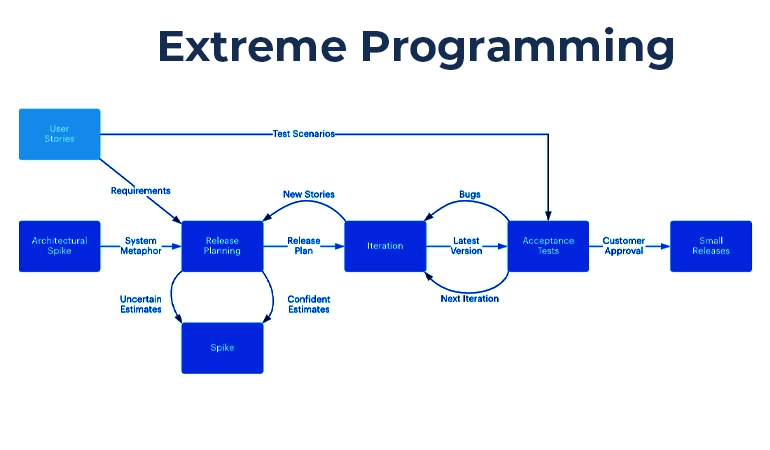
Some of its key practices and principles include the following:
- XP advocates for delivering small, frequent releases of working software to customers, enabling early feedback and validation of features.
- Planning in XP is continuous and adaptive, with a focus on short-term planning and responding to changing requirements and priorities.
- XP is famous for its pair programming, where developers work in pairs, with one writing code while the other reviews it in real time. Pair programming improves code quality, promotes knowledge sharing, and reduces defects.
- XP developers write automated tests before writing the code. This ensures that the code meets the desired functionality and can be easily tested for regressions.
-
DevOps
The DevOps approach is one of the most popular software development approaches today. It is a cultural and organizational movement that aims to break down silos between development (Dev) and operations (Ops) teams. This enables a more rapid and reliable software delivery.
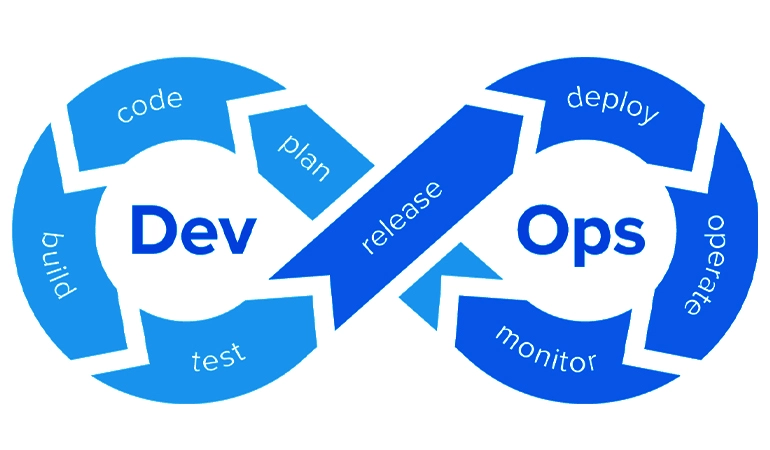
It emphasizes collaboration, automation, continuous integration, continuous delivery (CI/CD), and monitoring throughout the software development lifecycle. Its massive popularity is evidenced by the number of companies offering DevOps as a Service (DaaS).
Some of the key principles of DevOps include:
- DevOps emphasizes a culture of collaboration, trust, and shared responsibility between development, operations, and other stakeholders. It promotes communication, empathy, and a focus on delivering value to customers.
- Automation is at the heart of DevOps. It advocates for automating repetitive tasks, such as code builds, testing, deployment, and infrastructure provisioning, to increase efficiency, reduce errors, and free up time for more valuable work.
- DevOps also doubles down on CI/CD.
- Security is paramount for all DevOps engineers. They incorporate security practices throughout the software development lifecycle, including threat modeling, vulnerability scanning, and automated security testing. This is also known as DevSecOps.
Conclusion
It has been a long time since the Waterfall approach dominated software development. Today, newer, more nimble approaches have overtaken traditional ones. Although Agile and its associated sub-approaches reign supreme today, we don’t know what the future holds. Come tomorrow, we may expect the emergence of even more innovative and efficient software development life cycle methodologies. But for 2024, we bet that these are the top SDLC methodologies you need to choose from.
Are you looking to develop high-quality software for your business? You’ve come to the right place. Xavor is a leading IT company with a global presence and 1000+ successful IT projects. We offer innovative software solutions to startups and Fortune 500 companies.
Drop us a line today at [email protected] to schedule a free consultation call with our IT services team.












